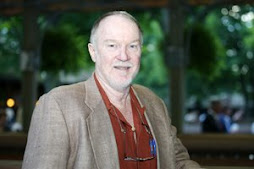When the Thoroughbred market went south in the late 1980s, American breeders turned en masse against foreign-raced stallions. Despite the fact that both American and European sire lists had been dominated by European-raced horses in the 1980s, despite the fact that horses like Blushing Groom (Fr), Caro (Ire), Riverman, Lyphard, *Vaguely Noble, and Nijinsky II were among the most commercially successful stallions with the highest stud fees of the decade, American commercial breeders decided that the solution to their problems was to stop breeding to foreign-raced horses and concentrate on American sires who had raced primarily or exclusively on dirt.
As a result, the only really high-class, European-raced horse I can think of imported to these shores for the last 20 years or so is Giant's Causeway. And, no, North Light does not count. He was an Epsom Derby winner in a substandard year. Perhaps a reader with a better memory can remind me of another really top European runner given a chance at stud over here in the last two decades?
So who is currently the leading sire in America, whether by worldwide or North American earnings only? Giant's Causeway of course.
Giant's Causeway did have certain advantages. Since he was by Storm Cat out of an American Grade 2 winner, Mariah's Storm, by Rahy, he was perceived as having a “dirt” pedigree. The best 10-furlong horse of his year in Europe, he had also performed brilliantly in his lone appearance on dirt, beaten only a head by Tiznow in the 2000 Breeders' Cup Classic (G1) at Churchill Downs.
Giant's Causeway also has had the advantage of covering enormous books of mares at Ashford Stud in Kentucky. His current $3.5-million lead over Tiznow on the worldwide earnings list is partly due to the fact that as of September 20, 2009, he has 327 runners this year compared to 144 for Tiznow. Distorted Humor, who is third has 255, while Fusaichi Pegasus, another Ashford sire who is generally considered a failure in the U.S., is fourth (mostly due to his Australian-sired runners) with 327 runners as well.
Giant's Causeway has also benefited from the evolution of American racing surfaces. Of the $54-million his offspring have earned worldwide to date, $33-million (61%) has been earned on turf. His offspring have earned $5.6-million of the remaining $21-million on synthetic surfaces. Thus, Giant's Causeway's progeny have earned 71.5% of their total earnings on surfaces other than dirt.
That certainly looks like a rock-solid confirmation that Giant's Causeway is not a dirt sire, but it may also be the result of something akin to a self-fulfilling prophecy. Owners and trainers expect the Giant's Causeways to be better on surfaces other than dirt and give them more opportunities on those surfaces.
What breeders, trainers and everyone else appear to have forgotten is that a truly top-class horse is usually a top-class horse on any surface. Yes, any horse can have slight preferences for firm going instead of soft, grass instead of dirt, synthetics, or any possible combination. But as a general rule, the differences are not that great, and most good horses will learn to adapt given the opportunity. With a wide range of opportunities these days, one cannot blame trainers for trying to run their horses on the surface they think is the very best for him.
Breeders have also forgotten that throughout the history of American breeding top-class European-raced horses have repeatedly transformed the American Thoroughbred. Imported sires dominated American sire lists for decades until Americans basically stopped breeding to them in the late 1980s.
Last week at the Keeneland September yearling sale, I asked a prominent European buyer why he had all but stopped buying in America. The answer was simple. Current European sires—Galileo, Montjeu, Pivotal, Oasis Dream, Monsun, Dansili—are simply better than current American sires. Their offspring do not require drugs to run. They produce a higher percentage of Grade 1 winners. And they win in America, while American-sired horses seldom win major races in Europe anymore.
Thirty years ago, Claiborne Farm, Gainesway, and other American breeding farms would have been in hot pursuit of Europe's current wonder horse Sea The Stars.
Does anyone believe they have any real interest these days?
The Horse Racing blog has moved
8 years ago

